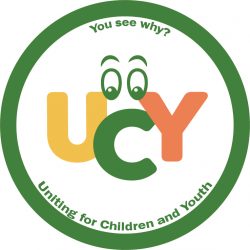Question 2 – Zone 4 Responses
Contents
-
-
-
- The Question in brief
- Response from:
– Wendy Hough
– Dragos Popa
– No Response
-
-
Link: See Responses to Question 2: Parts 1 – 6 for a table summary of the first 6 parts of Question 2.
The Question in Brief
There are 8 parts to this question. “Yes” or “No” answers were required for the first 6 parts, but candidates were welcome to qualify their answers. Part 7 required a prose answer, and part 8 was optional. In brief, the question asked the following. The full text of the question is found at: Question 2 – Systemic Innovation.
- Do you believe that public education needs to evolve from its industrial management practices to ones more appropriate for today? Y/N
- Do you agree that formal scheduling is a major barrier to systemic innovation? Y/N
- Would you act to establish an OCDSB Systemic Innovation Advisory Committee made up of student, parent, teacher, administrator, ministry, university professor, business and community representatives? Y/N
- If “Y” to #3, would you act to have the committee established in time for systematic field studies to begin in September 2019? Y/N
- Would you support developing a board wide inventory of innovative actions by teachers and principals? Y/N
- Would you help to create partnerships with universities that want to conduct studies of how school boards can transition from the industrial model to one that suits today’s needs? Y/N
- What is your vision of the ideal school?
Wendy Hough
- Y … absolutely
- N … but this is a matter of degree. I think that formal scheduling posses both a challenge for some types of learning while it provides a structural framework that helps to guide the use of time. I do, however, think it is time to look at the specifics of the elements of scheduling such as number and duration of activity and nourishment breaks.
- Y … absolutely. The composition of this committee should be as broad as possible.
- Y/N … An appropriate timeline is hard to establish at this point. There may be considerable ideational and design work that would need to be completed in advance of systematic field studies. Further, certain partnerships could be established that might influence this timeline as well (e.g., could this form part of an academic research project in which case there may be many steps such as securing funding, etc. that may determine timing).
- Y … absolutely. Again, I see the possibility for an academic research project being done on the issue.
- Y … I think I may have indicated that already. My bias towards well conducted research as a means of critically examining an issue stems from my own research training using both qualitative and quantitative research methods to delve both wide and deep into a problem space.
- What is your vision of the ideal school? This question hits to the heart of some profound observations and revelations that I have made at various stages of my life. I am going to share those with you as the preface to my answer.
I was a school success story growing up; I had straight As, I raised my hand and did my homework. In high school I was on the students’ council and the athletic commission. I played soccer and performed in plays all while holding a part-time job. I was able to take enriched level courses and had the wonderful opportunity to complete grade 13. I had early final acceptance to McGill where I went on to do three degrees. Does it get better than that? The sad answer is yes, much better. It was not until my final course in graduate school – a predictive statistics course – that I finally realized that school was not about taking tests but about the experience of learning. I learned so much in that course that it nearly fell out of my head and right onto the floor during my final exam and I could not have cared less if it had and I failed the exam. I had been engaged by the professor and the material in a way that the lightbulb finally turned on. It was not about jumping through hoops. It was not about advancing to the next level or getting the grades that would open the next door. Education is about learning; who knew? I had spent my entire 25 year educational career being a test taker. How sad.
My next revelation occurred when I was doing some teacher-training in a Cree community on the James Bay. In the Cree culture, scheduling is much more fluid with children. This is based on a number of cultural determinants that are beyond the scope of this discussion and as this was in a specific local 20 years ago, I do not know if this is still commonplace. Regardless, the result of this more fluid scheduling was that many children were up in the evening until their parents headed to bed. Needless to say having those same children in a seat in a classroom by 9:00 am was a challenge for many on a regular basis. It was when I saw this that I first thought about the origin and impact of scheduling on schooling. Although the origin of the 9:00 am start time and the regimented nature of school scheduling have their origins in the industrial model and our two month summer vacation reflects the needs of the harvest, I had never thought about how it didn’t translate well to all situations; how it is actually quite arbitrary. The impact of the timing of the school day had not dawned on me until I saw how poorly it worked in that setting. Now as the parent of two teenagers, one of whom is not a morning person, I more fully appreciate the magnitude of the situation in the schools in our community.
My final revelation relates to my children as well. They are only one grade apart from each other and could not be more different as learners. Their school experience is playing out completely differently. One child, Child A, is a success story in the traditional sense as I was with the bonus that we have actually managed to impress upon Child A the joy that comes with true learning. Child A finds school to be very rewarding and engages in it to the fullest extent both academically and extracurricularly. Child B does not like school (I am being polite). Child B feels strongly that both the content and delivery of curriculum are irrelevant and antiquated. Child B gets As in courses that are either deemed to be interesting or relevant or are being taught in some unique way while those that are not produce results that are much less telling of the Child B’s capacity to learn. As a parent, I am frustrated by Child B’s inability to just get’er done despite my less than satisfactory explanation of why that should be the case – why the hoop needs to be jumped through (it is very hard to write this without revealing the gender and identity of Child A and Child B).
So back to the question; what is my vision of the ideal school? The truthful answer is that I do not have a clue but I do know that it is time to look at possibilities – to look for innovations small and large that might produce schools that engender true learning and are more responsive to different needs and learning styles. We need schools that can work for Child A and Child B. I could make comment on all of the options that are listed by the UCY but this would produce nothing more than an opinion piece. I agree whole-heartedly that the time has come to give the matter of educational reform serious consideration. I think it is the time to explore what is being done – what is working and what is not? What innovations are already in place and how can they be up-scaled if they are proving effective? I think it is time for creative collaboration between stakeholders including students, parents, teachers, and well beyond to include academics and community and business leaders – we need a collaborative vision of education. However, I think that there is a process involved in change management; I believe in innovation not anarchy. I also believe strongly in measurable outcomes. As trustees, we will sit accountable for directions taken. We must be able to assess and document the impact of innovations. This could and should be done in partnership between school boards, the Ministry of Education and universities to ensure both the rigour of study required and the transfer and uptake of that knowledge by educators.
Dragos Popa
- Y
- N
- Y
- Y
- N/A. This is a multi-prong question, and I cannot answer it with a Y or N. For example, I would not support keeping students in their community schools by default, as there is demonstrated merit in congregated programs which are not in the students’ home school. Otherwise, I would most definitely support developing a board-wide inventory of innovative actions.
- Y
- What is your vision of the ideal school? In my view, the ideal school is one that ensures equity and quality education for all: a system where student needs take precedence over inflexible rules.
Consultations with students, parents and communities are ongoing and conducted in a meaningful manner. The overall system is open, transparent and user-friendly.
Schools boards are given more authority to make decisions at the local level, based on the principle of subsidiarity – as opposed to key decisions largely made by the provincial Ministry of Education.
Planning for programs and services across the school district is long-term and effective. Decisions are no longer rushed and half-baked, but rather aligned with a strategic plan established by board staff in close consultation with internal and external partners and stakeholders.
Schools ensure proper accountability and good performance for its programs: if you can’t measure it, you can’t manage it.
Sufficient resources are provided into the classroom (including educational assistants) and for extracurricular activities.
Learning plans are communicated adequately, so everyone (students, teachers, parents) can monitor progress and help improve student performance.
Schools ensure extensive professional development for teachers, with a focus on special education.
Access to technology is guaranteed for teachers and students; the school provides a “licence to innovate” in the classroom.
Student well-being is a key focus for everyone; this includes extensive resources and services for positive mental health, provided at or through the school.
No Response
– Fraser Anderson

